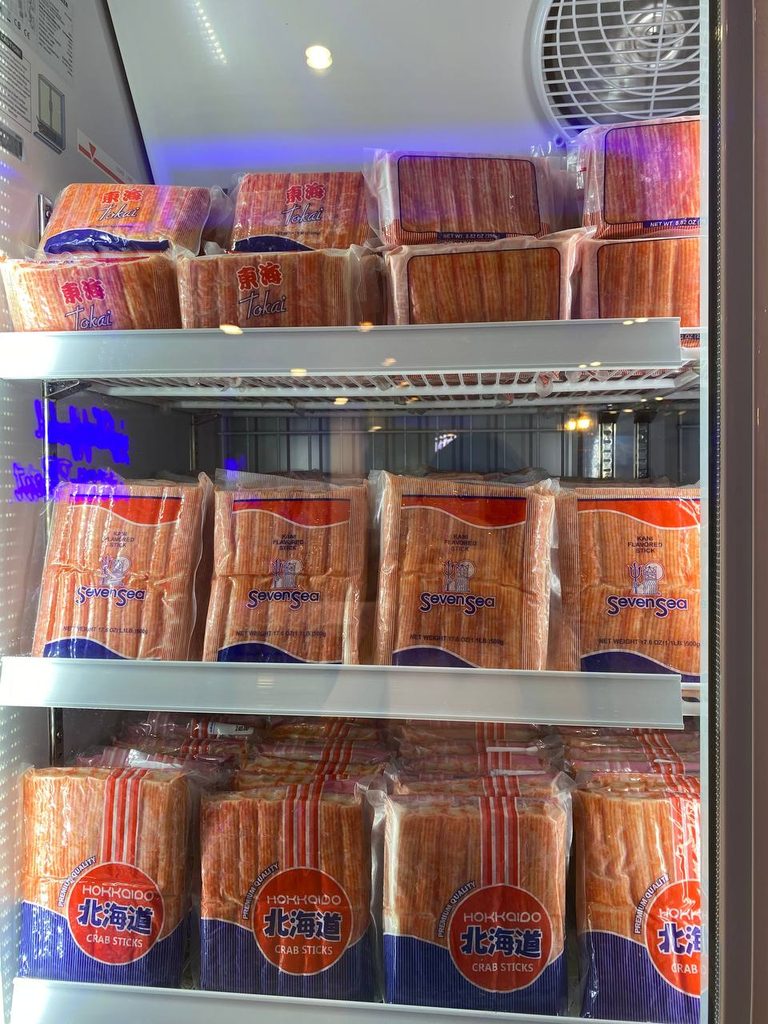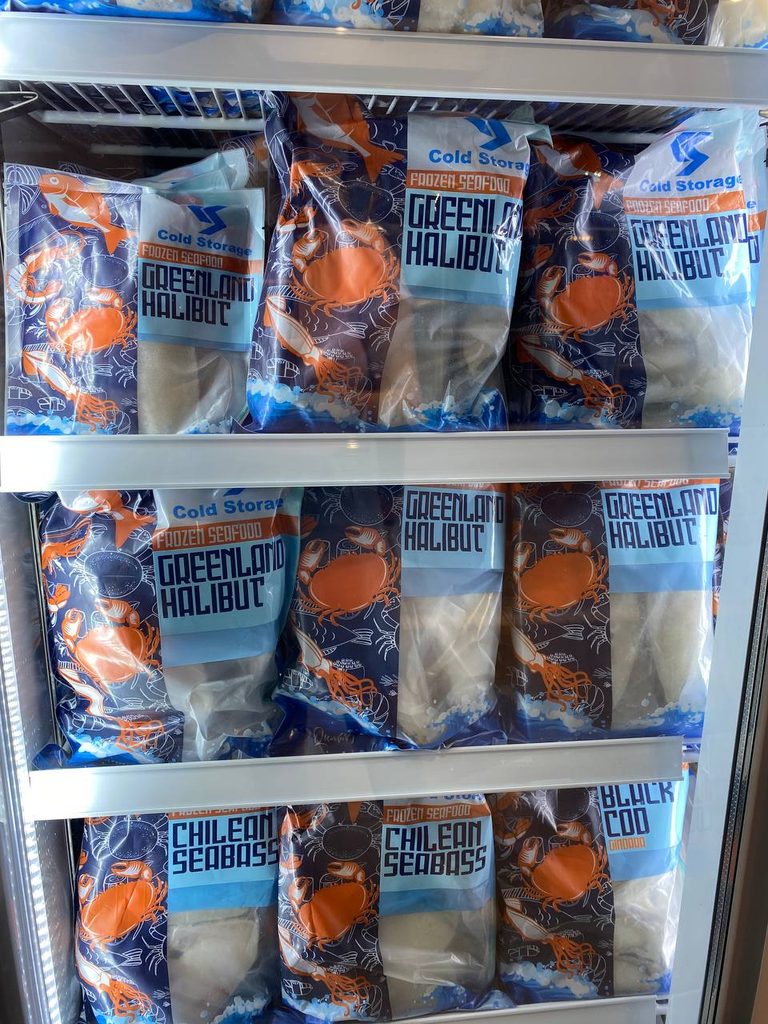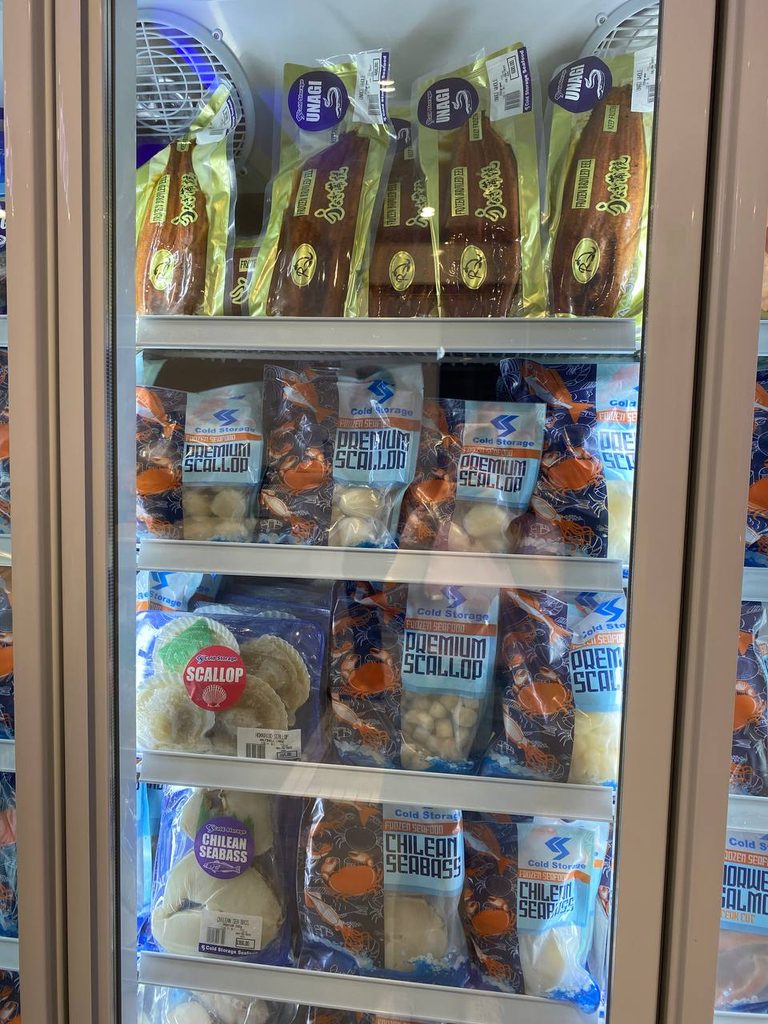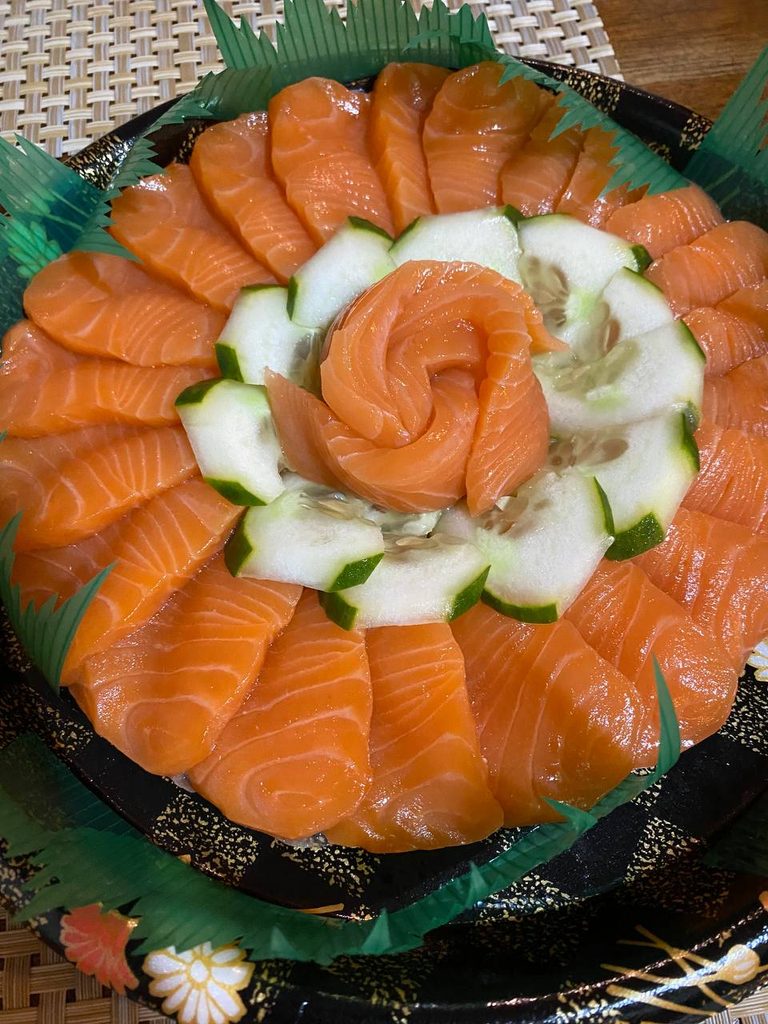SUMMARY
This is AI generated summarization, which may have errors. For context, always refer to the full article.

MANILA, Philippines – Whenever you’re shopping at your grocery’s frozen food aisle, do you get confused over which bag of frozen shrimp or cut of fish to get? And when you do finally decide, maybe you’re not sure how best to utilize your purchase for your next home-cooked meal.
Chill ka lang! For home cooks, frozen seafood can easily be your best friend, if you just know how to pick and use the best catch of the day. Cold Storage co-owner Marco Qua can help – he is currently behind the country’s institutional frozen seafood brand, which was founded by his father. You can say that he knows his seafood stuff – the family-owned business has been around for decades since 1988.
The familiar frozen goods name in major groceries opened its first store in Banawe in 1996, and its second one (which was just newly renovated) in Wilson Street, San Juan City shortly after.

Frozen scallops, unagi, salmon fillets, crab sticks, tanigue, tuna, halibut, gindara, squid, and way more – it’s easy to get overwhelmed with all the options. But the cold doesn’t have to bother you anyway – Marco offers some tips and tricks on how to ensure you’re getting the high-quality frozen seafood you deserve!
Kani get it: Check your kani
Kani – or crabstick – is not all the same. Low-quality kani can taste artificial and too flour-y, with a mushy texture that feels very manufactured. Marco said that authentic, premium kani has an “easy-to-strand” texture, somewhat like a string cheese. Check if it’s made internationally, and make sure to peruse the ingredient list.

The first ingredient stated is usually the one with the highest amount, so a good crabstick would have fish as its first. In this case, itoyori surimi is 54%, followed by soybean oil. Some crabsticks have less – 45% in some brands – but it doesn’t necessarily mean the higher the better. High amounts may result in very fishy flavors, Marco said. It all depends on your preference. Marco said premium kani is best used for sushi bakes, kani salads, California maki, and such, as it has a nice bite to it.
Use your senses
Do not underestimate the power of your sense of sight, smell, taste, and touch! Marco said that when choosing salmon, notice the skin – does it look neat? Not scaly? Of uniform color? Also check the color of the salmon – it should always be bright pink.
The smell is hard to test since it’s packaged. If you’re cooking with salmon, also make sure that the texture is flaky-moist, and not dry-flaky. If you’re cooking frozen shrimp, make sure the taste is slightly sweet, and not fishy – usually shrimp from Bacolod and Cebu are of the sweeter kind, Marcos said, that is why they source from those regions.
Go frozen, not fresh
What are the advantages of going frozen, and not fresh? Aside from the convenience of shopping at a the grocery versus waking up early to hopefully get the best catch of the day at your nearby and busy palengke, buying frozen seafood removes the barrier of fishy smells and the risk of not getting premium quality.
You also save time and energy on preparation – since frozen seafood conveniently comes in your chosen cut – and spares you the hassle of deboning or filleting, which not many home cooks are experts at.
Know your source, trust your brand
According to Marco, you’ll get the best quality seafood if it’s imported by exporters and dealers, and not traders or middlemen. You’ll usually get the best value and quality from brands that carefully deal with trusted suppliers, who carefully curate each product that’s imported.
When buying seafood for your family, it is important to trust the brand and know your source. Go for a trusted brand that’s been tried and tested by your family, friends, or loved ones – avoid an obscure, not-so-known brand, even if it may be cheaper.

“Trust the source. Don’t also just buy from any resuppliers on social media with the ‘best deals.’ It may be cheap, yes, but you might be left with a bad product. Be wary, and make sure you trust the brand,” Marco said.
Find out if the brand you patronize deals with the exporters and packers hands-on. Some brands who work with traders are rough with the goods’ handling process – prioritizing speed and quantity over caution and fragility. When exports are too rushed, fish can go through trauma during travel and end up with blood clots from bad handling.
Defrost properly
Knowing how to defrost your frozen fish is so important, Marco said, even more than we realize. Many of us (guilty as charged) may defrost a fish by placing the package in a bowl of warm water to speed up the defrosting process, or even microwave it. This is a no-no, Marco said, as it may tamper with the natural defrosting timeline of your frozen fish and allow the natural oils to seep out. In one case, the salmon was slightly cooked already during the defrosting process – he could see the bright pink color of the fish turning pale.

“The rapid temperature decline will not be natural,” Marco said. Truly, patience is a virtue when preparing frozen seafood! What you should do is leave the fish in room temperature for around 1-2 hours until fully thawed out naturally.

It is also important to consider the travel time from your grocery to your home. The cold chain is crucial in ensuring your seafood’s quality – the trip should not be longer than three hours, as the fish might defrost in the car. The quality will deteriorate quickly if you defrost, freeze, and then defrost again.
That is why Marco has made it a point for Cold Storage to be available in most supermarkets in and outside the Metro; to spare consumers’ from this trouble.
Know your cuts
It also pays to know your cuts, Marco said, as each one offers its own quality, purpose, and even taste. When it comes to salmon, check out the loin – this is usually the meatier cut of salmon and is already sashimi-grade, depending on the source.

Marco has a tip on how to get the best creamy salmon sashimi from frozen loin – dip the fish in lukewarm water with a teaspoon of salt for 30 seconds, and then slice. Enjoy it with soy sauce as sashimi or in your homemade poke bowl! On the other hand, salmon fillet – packed with the skin on – is known as the most versatile cut, usually used for baked salmon, pan-fried salmon, and more dishes.
Scallops can also come in different cuts and sizes, depending on what you’re preparing. The whole scallops are usually softer and more buttery – great to sear in just lemon, butter, and garlic. The scallop bits, on the other hand, are best used for fried rice or vegetable stir-fry, as they’re chewier. – Rappler.com
You can follow Cold Storage on Instagram or Facebook for more information.
Add a comment
How does this make you feel?
There are no comments yet. Add your comment to start the conversation.